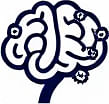The Framing Effect and Its Influence on Choices
 by Verner Mayer
by Verner Mayer
The Framing Effect shows how the presentation of options can alter decisions, impacting fields like psychology and business. Learn about its mechanisms, real-world examples, and strategies for better decision-making through awareness of this cognitive bias.

The Framing Effect is a key concept in cognitive psychology that demonstrates how the wording or context of information can sway decisions. For instance, people might opt for one choice if it's presented positively, while rejecting the same option if framed negatively.
In psychology, this effect highlights subtle influences on human behavior. Researchers have found that Framing Effect often leads individuals to make choices based on emotional responses rather than objective facts. A classic example involves health decisions: describing a surgery as having a 90% survival rate encourages more people to choose it compared to saying it has a 10% mortality rate.
This phenomenon extends to everyday scenarios. In advertising, companies use positive framing to promote products, making them seem more appealing. For example, a product labeled as "95% fat-free" sounds healthier than one described as "containing 5% fat," even though both mean the same thing.
Business strategies also rely on this effect. Leaders might frame financial reports to emphasize gains rather than losses, influencing investor decisions. cognitive bias like this can affect negotiations, where framing a proposal as a gain motivates agreement more than framing it as avoiding a loss.
To explore further, consider how this plays out in cognitive development. Children and adults alike develop mental shortcuts that shape their perceptions. Studies show that early exposure to framed information can mold long-term thinking patterns, making awareness essential for personal growth.
How the Framing Effect Works
At its core, the Framing Effect occurs because humans process information through mental filters. These filters are influenced by language and context, leading to different interpretations of identical data. For example, in medical contexts, framing treatment options in terms of benefits versus risks can determine patient preferences.
One experiment involved participants choosing between two programs to combat a disease outbreak. When options were framed in terms of lives saved, most selected the safer choice. But when framed in terms of lives lost, preferences shifted dramatically. This illustrates how decision making is not always rational.
Real-World Applications
In business, the Framing Effect can be seen in marketing campaigns. A store might frame a sale as "Save 20% today" instead of "Pay 80% of the original price," boosting sales through positive association. Similarly, in politics, candidates frame policies to appeal to voters' emotions, such as focusing on job creation rather than economic challenges.
Psychology offers tools to counter this bias. By recognizing patterns, individuals can evaluate options more objectively. For instance, rephrasing questions to neutralize language helps in achieving balanced views.
Implications for Cognitive Development
Over time, repeated exposure to framed information shapes cognitive habits. This can hinder critical thinking if not addressed. Parents and educators play a role by teaching children to question presentations and seek underlying facts.
In professional settings, awareness of the Framing Effect improves team dynamics. During meetings, reframing discussions to include multiple perspectives encourages innovation and reduces groupthink.
Practical Strategies to Mitigate the Effect
First, pause and reframe information yourself. If you encounter a decision presented in a certain way, try restating it neutrally. For example, turn "This investment has a high chance of profit" into "This investment has risks and potential returns."
Second, seek diverse opinions. Consulting others provides alternative framings, leading to more informed choices. In business, this might involve data analysis from various angles to avoid skewed interpretations.
Finally, practice mindfulness in daily life. Reflecting on why certain options seem more attractive can reveal hidden influences, fostering better habits over time.
Through these approaches, individuals can build resilience against cognitive biases. The Framing Effect serves as a reminder that perception is key to effective decision-making, encouraging a more thoughtful approach in all areas of life.
In summary, recognizing and addressing the Framing Effect empowers better choices in psychology, business, and beyond. By applying these insights, anyone can enhance their cognitive toolkit for improved outcomes.
